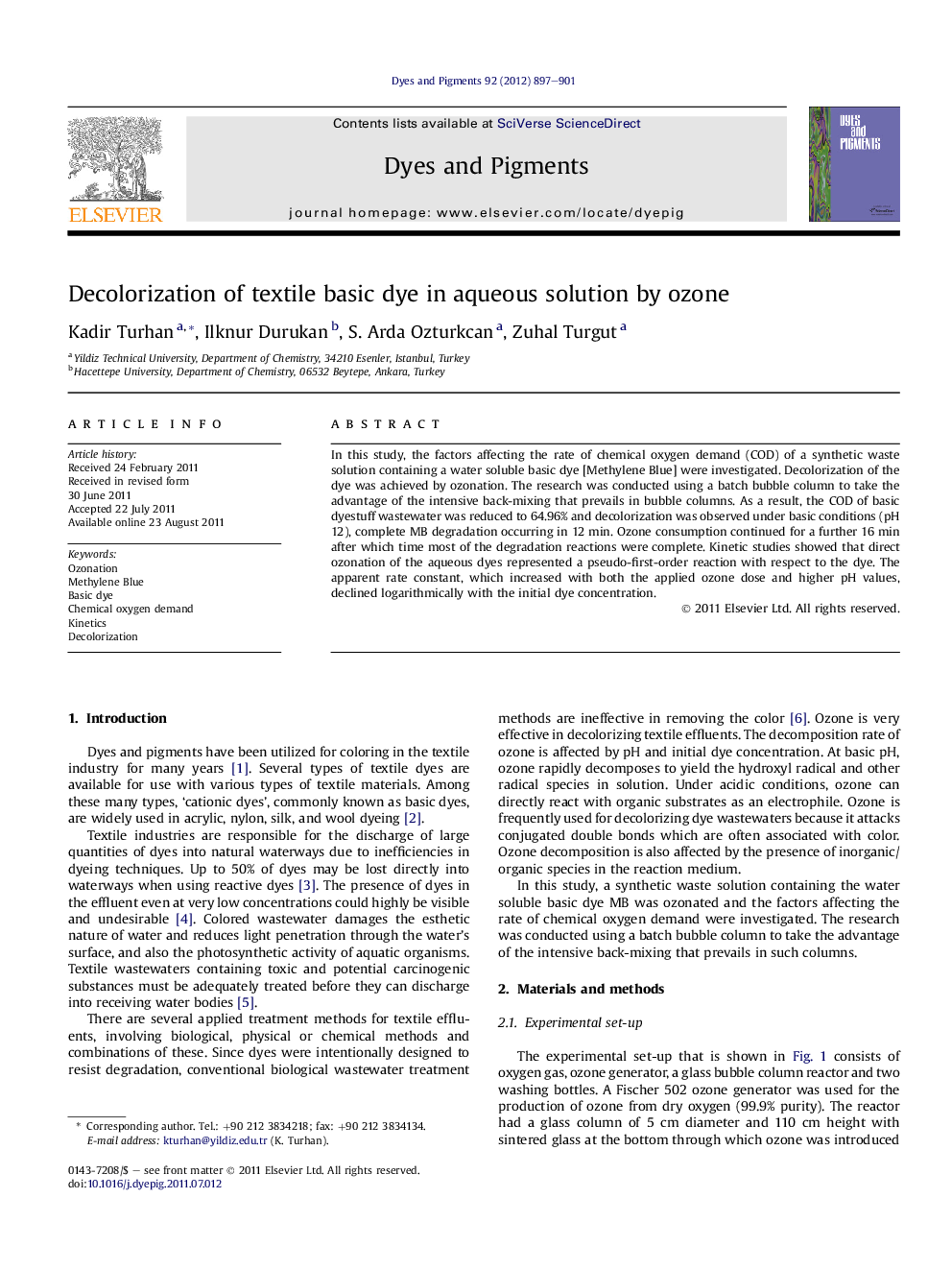| Article ID | Journal | Published Year | Pages | File Type |
|---|---|---|---|---|
| 176995 | Dyes and Pigments | 2012 | 5 Pages |
In this study, the factors affecting the rate of chemical oxygen demand (COD) of a synthetic waste solution containing a water soluble basic dye [Methylene Blue] were investigated. Decolorization of the dye was achieved by ozonation. The research was conducted using a batch bubble column to take the advantage of the intensive back-mixing that prevails in bubble columns. As a result, the COD of basic dyestuff wastewater was reduced to 64.96% and decolorization was observed under basic conditions (pH 12), complete MB degradation occurring in 12 min. Ozone consumption continued for a further 16 min after which time most of the degradation reactions were complete. Kinetic studies showed that direct ozonation of the aqueous dyes represented a pseudo-first-order reaction with respect to the dye. The apparent rate constant, which increased with both the applied ozone dose and higher pH values, declined logarithmically with the initial dye concentration.
► Factors affecting COD of waste solution containing Methylene Blue were investigated. ► Decolorization of dye was achieved by ozonation using a batch bubble column. ► COD of basic dyestuff wastewater was reduced to 64.96%. ► Decolorization was remarkable under basic condition, MB degradation occurs in 12 min. ► Direct ozonation of aqueous dye was pseudo-first-order reaction with respect to dye.
